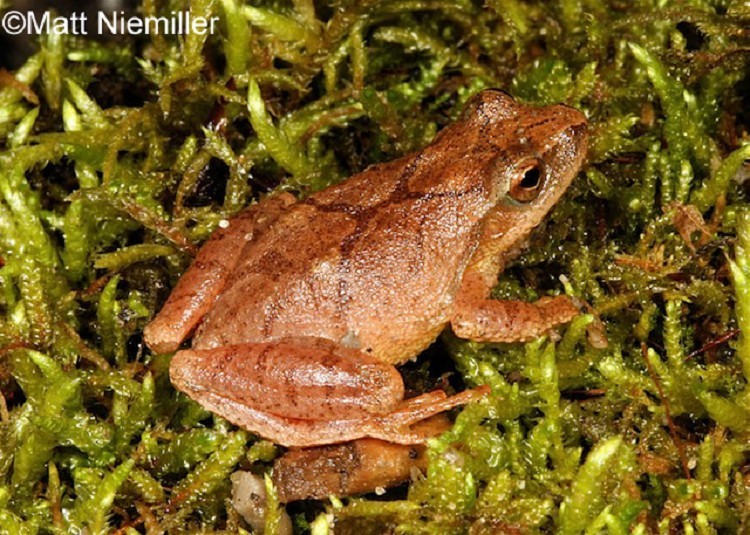Spring Peeper
Pseudacris cruciferCommon and widespread both in Tennessee and the eastern United States and Canada, the little Spring Peeper-and its call-is familiar and beloved to many.
Description:
Small (0.7 to 1.2 inches) and typically brown to gray in color, the Spring Peeper gets its scientific name from the dark "X"-which is often imperfect-that appears on its back.
Similar Species:
The Mountain Chorus Frog has dorsal markings which may resemble an "X", but it typically has a well-defined dark triangle between the eyes.
Voice:
A high-pitched piping whistle that sounds like peep, peep, peep.
Habitat:
Spring Peepers are found in wooded or brushy areas close to temporary or semi-permanent bodies of water in all parts of Tennessee. Although they are good climbers, they appear to prefer to be on the ground or in leaf litter.
Diet:
This species is insectivorous, eating small insects such as ants, beetles, flies and spiders.
Breeding information:
Spring Peepers breed in freshwater ponds or pools, especially those without fish. They often use pools that dry up shortly after the tadpoles mature into adult frogs. Females lay from 800 to 1,000 eggs singly or in clusters of 2 to 3. Eggs are attached to submerged vegetation and hatch in 2 to 3 days. Metamorphosis of tadpoles takes from 3 to 4 months, and sexual maturity is reached within 1 year.
Status in Tennessee:
Common throughout the state.
Fun Facts:
•During times of drought, Spring Peepers sometimes take refuge in caves
•Spring Peepers have been heard calling at an elevation of 6,300 feet in the Smoky Mountains
Best places to see in Tennessee:
Woodlands near water are sure to have Spring Peepers.
For more information:
